One wrong move with brushes or shampoos can leave your dog’s fur dull, brittle, or even falling out.
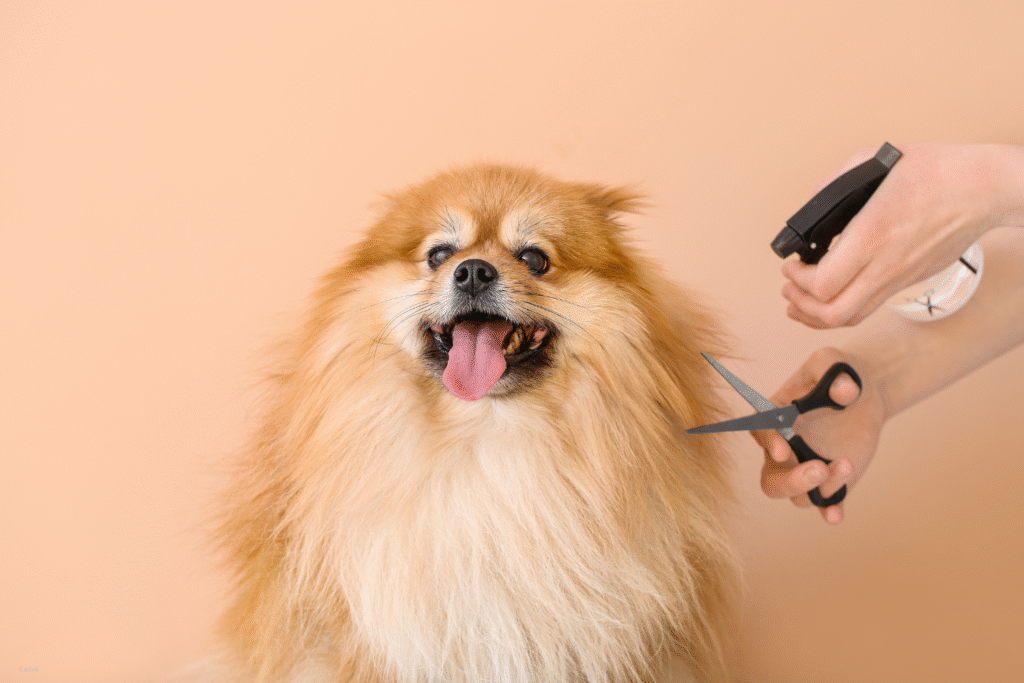
Most owners think grooming is as simple as brushing and bathing, but one bad habit can destroy a dog’s coat health for months. Coats are sensitive, tied to diet, skin health, and even stress levels. When grooming goes wrong, you might end up with mats, bald spots, or irritation you never expected. These mistakes are common, easy to overlook, and they can undo all your care efforts in a matter of days.
1. Using the wrong brush shreds fur instead of smoothing it.
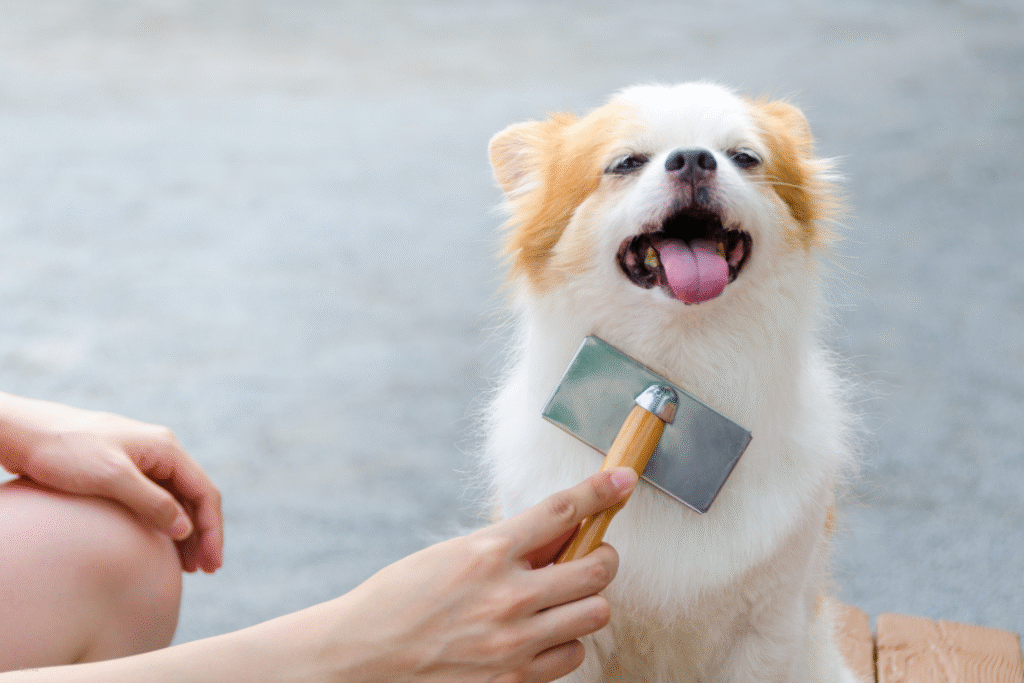
As stated by the American Kennel Club, choosing the wrong type of brush can damage both the coat and skin. A slicker brush on short hair can cause irritation, while soft bristle brushes on double coats often fail to remove undercoat shedding.
Coat type determines which tools you need, and using the wrong one breaks fur shafts, making hair look frizzy and unhealthy. Brushing with the correct tool distributes natural oils evenly, keeps hair aligned, and stimulates circulation. This small switch can instantly improve coat texture and shine. Owners who get professional guidance on brushes often see immediate results in their dog’s coat condition.
2. Bathing too often strips away essential oils.
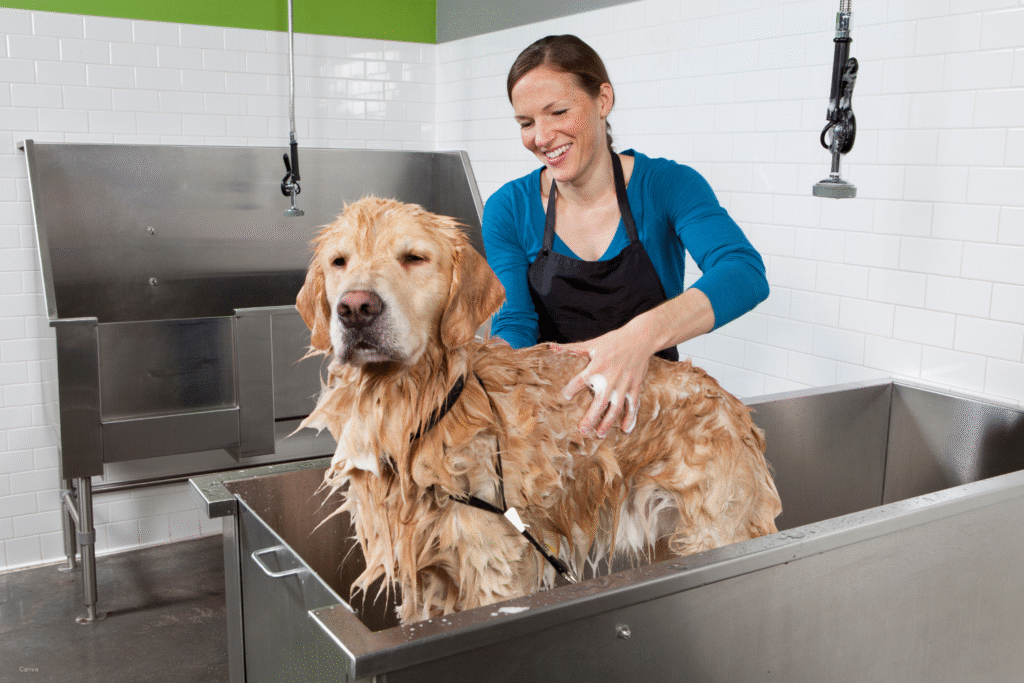
According to research published by PetMD, frequent bathing removes natural oils from a dog’s skin and coat, leading to dryness and breakage. Many owners bathe weekly when most dogs only need a bath every month or two, depending on activity level.
Those oils act as a protective barrier against bacteria and environmental damage. Without them, fur becomes brittle, itchy, and prone to shedding. A dog’s coat that seems dull or flaky often recovers simply by extending the time between baths and using a gentle, pH-balanced shampoo instead of harsh products.
3. Skipping conditioner leaves coats vulnerable to damage.
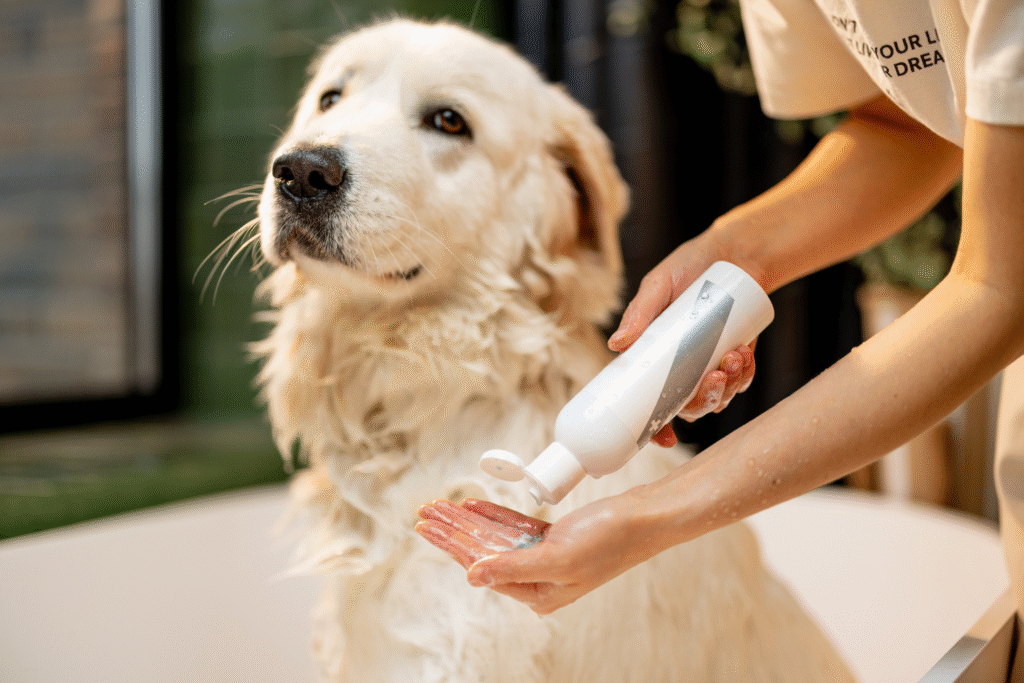
As discovered by the Journal of Animal Science, conditioning products help restore moisture balance and smooth hair shafts, preventing tangles and breakage. Dogs with longer hair or curly coats are especially prone to matting without this step.
A well-chosen conditioner helps detangle hair, protect against static, and lock in moisture after shampooing. This simple habit reduces grooming time and prevents coat stress caused by pulling at knots. Owners who include a conditioner in their grooming routine often notice softer fur and fewer mats almost immediately.
4. Ignoring undercoat care leads to painful matting.
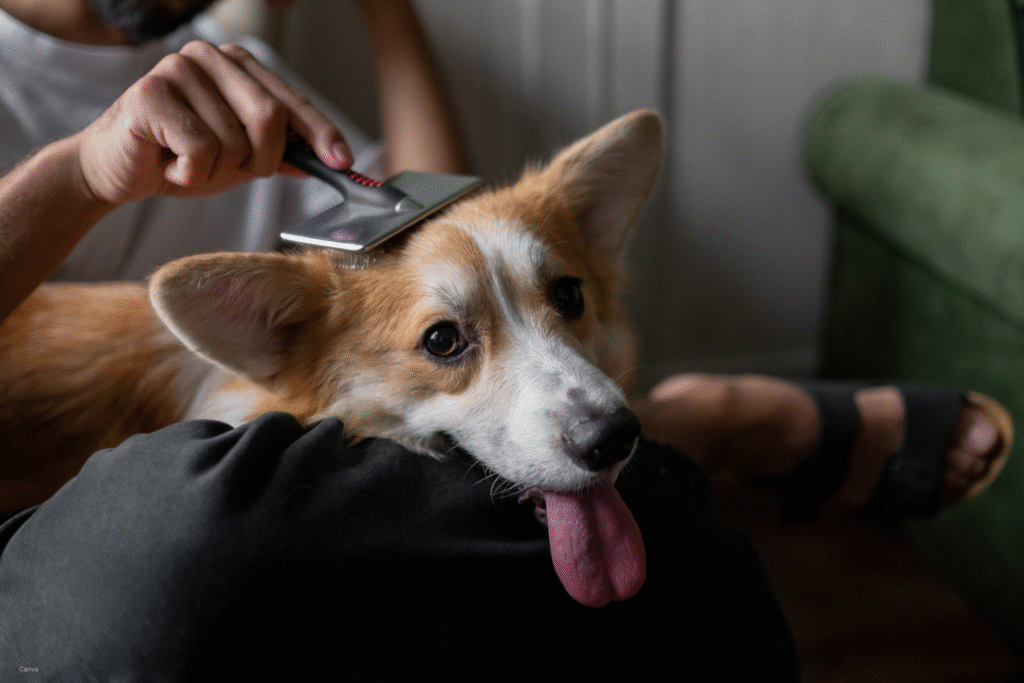
Double-coated breeds shed heavily, and neglecting their undercoat causes dense mats close to the skin. These mats trap moisture, dirt, and even parasites, leading to irritation and infection.
Regular de-shedding tools or professional grooming are essential during heavy seasonal shedding. Without this step, fur becomes uneven and unhealthy, and the skin underneath can suffer damage. Matting can even restrict airflow to the skin, causing hot spots or sores that take weeks to heal.
5. Using human shampoos wrecks coat health fast.
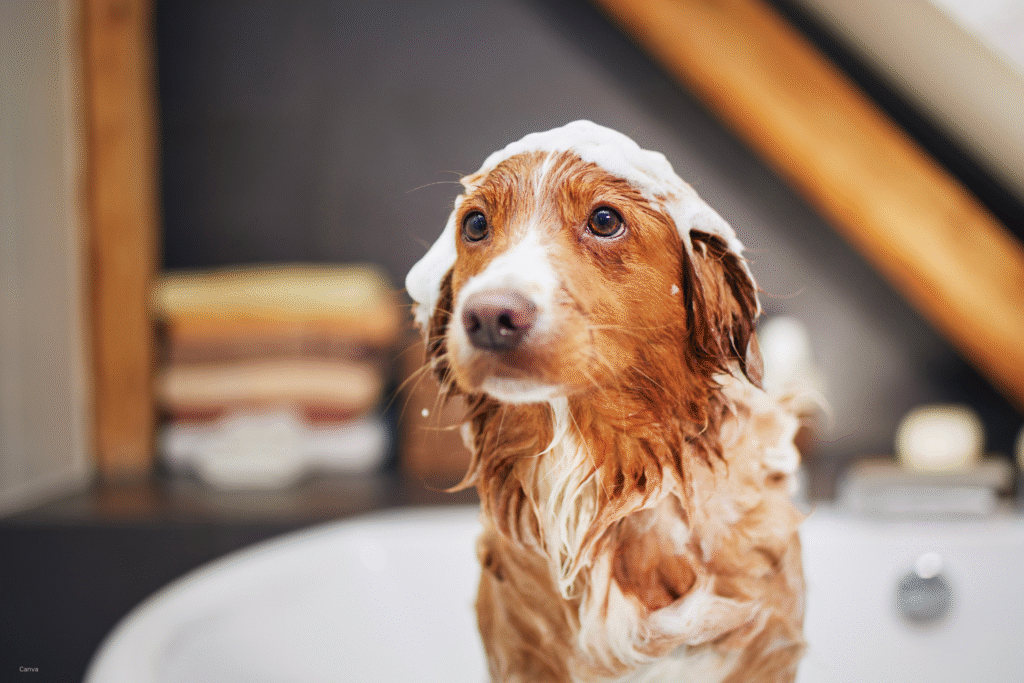
Human shampoos are often too acidic or contain additives dogs cannot tolerate. These products strip oils and disrupt pH balance, leaving coats dry, itchy, and prone to breakage.
Even “mild” human shampoos can create long-term damage that takes months to reverse. Canine-specific formulas exist for a reason—they protect the coat while preserving skin health. Owners who switch to dog-safe products usually notice an immediate improvement in softness and shine within just a few washes.
6. Cutting fur too short for the breed weakens regrowth.

Shaving or cutting fur improperly can damage hair follicles, especially in double-coated dogs where fur acts as insulation. Short cuts often cause uneven regrowth or even permanent changes in texture.
Leaving at least a moderate length preserves the coat’s natural function and protection. Professional groomers trained in breed-specific styles know how to manage length safely, keeping coats healthy without exposing skin unnecessarily to sunburn or cold.
7. Skipping regular brushing creates long-term coat stress.

Even low-shedding breeds need brushing to remove debris, distribute oils, and prevent knots. Neglecting brushing leaves hair prone to tangles, which eventually require cutting instead of combing out.
A simple daily or weekly brushing routine dramatically reduces coat stress. It also helps identify skin issues early, like bumps or pests, before they become serious. Consistent brushing is one of the easiest habits for keeping coats shiny and healthy year-round.
8. Ignoring diet as part of grooming sabotages coat health.

A shiny coat starts inside, and diets lacking essential fatty acids, vitamins, and protein often result in dull, brittle hair. No amount of external grooming can overcome poor nutrition.
High-quality food formulated for skin and coat health, sometimes supplemented with omega-3s or biotin, improves coat resilience. Owners frequently see visible changes in just weeks when diet improves. Grooming is only half the battle—what goes in the bowl directly affects what grows out of the skin.
9. Rushing through drying can undo all your work.
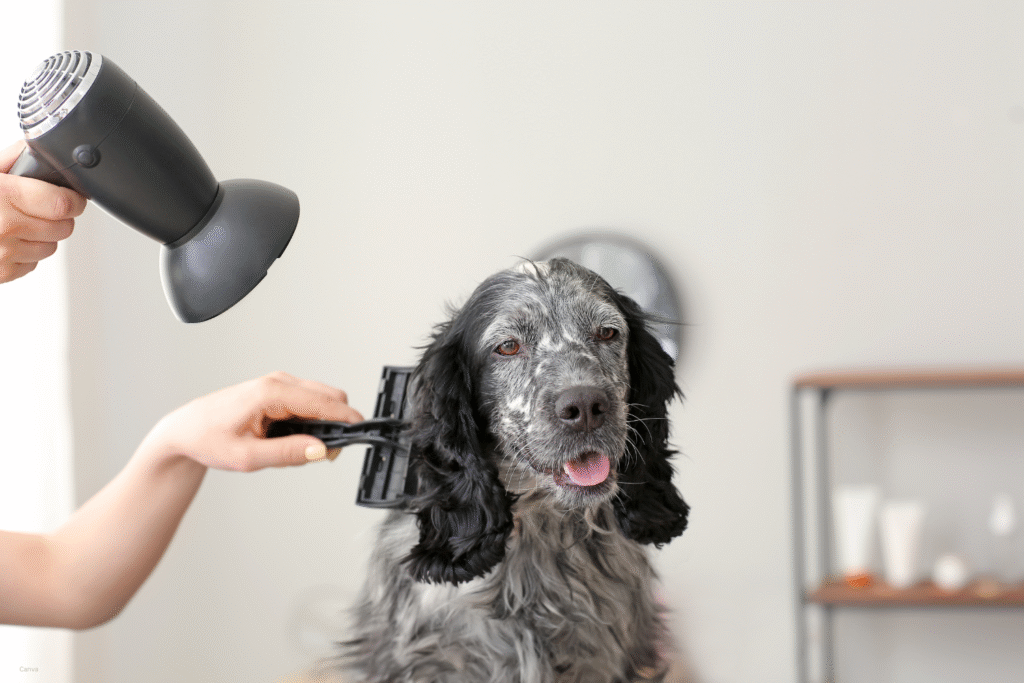
Leaving fur damp after a bath or not drying evenly creates humidity against the skin, leading to irritation and fungal growth. It also encourages matting, especially in longer coats.
A towel alone often does not cut it for thick or double coats. Blow drying on a low, cool setting and brushing during drying prevents knots and helps hair lay properly. Taking a few extra minutes here protects both coat and skin long-term.
10. Forgetting professional grooming checkups leads to overlooked problems.

Even the most attentive owners miss details that trained groomers catch, such as small mats, early hot spots, or minor ear issues linked to coat health. Skipping professional checkups can mean letting tiny problems grow into big ones.
Professional grooming also resets coats by clearing deep dirt, trimming ends, and restoring shape. A few visits per year can prevent coat damage that home routines might miss entirely, giving your dog a healthier look and feel that lasts longer.
